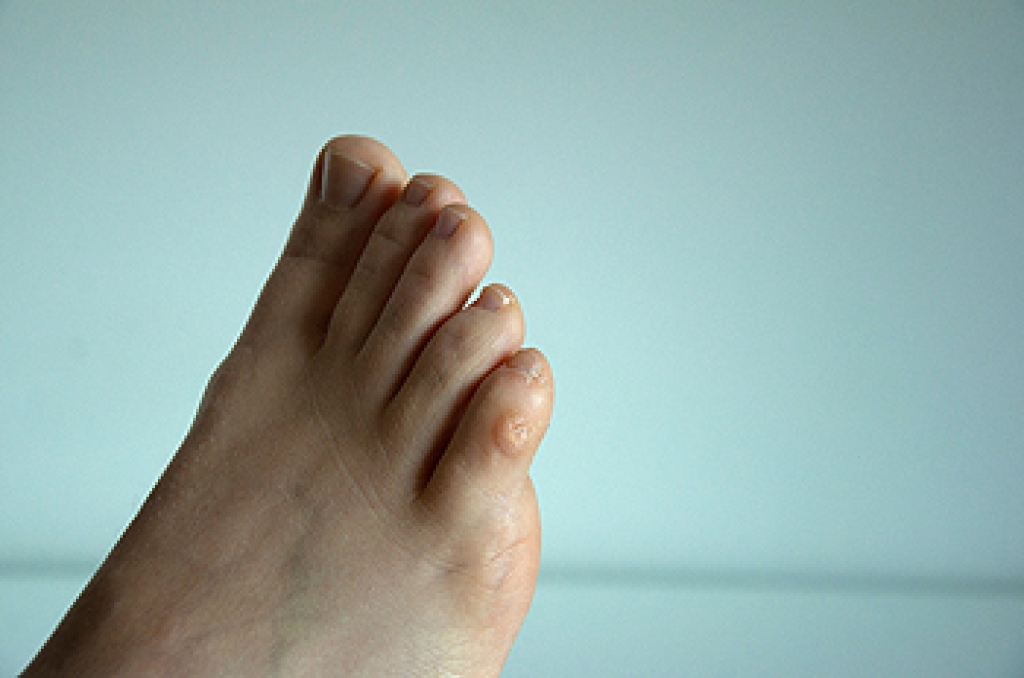
Corns on the feet are hard thickened dots of skin caused by pressure and friction. Corns are small dots of toughened skin, with a tiny hard kernel inside of them. They are commonly found on the toes, largely as the result of wearing shoes that do not fit correctly. The toe rubs against the side or top of the shoe and a corn begins to form. Deformities, such as bunions and hammertoes, can contribute to the formation of a corn. Wearing high heels that compress the toes and cause extreme pressure may also be a factor. Corns will not go away on their own, especially if the condition that caused them is not removed. Treating a corn yourself is not recommended, as infections can develop. Seeing a podiatrist is highly suggested instead. The podiatrist can remove the hardened skin in a safe and sterile setting and prescribe custom orthotics depending on the cause of the corns.
Corns can make walking very painful and should be treated immediately. If you have questions regarding your feet and ankles, contact one of our podiatrists of ABC Podiatry. Our doctors will treat your foot and ankle needs.
Corns: What Are They? And How Do You Get Rid of Them?
Corns are thickened areas on the skin that can become painful. They are caused by excessive pressure and friction on the skin. Corns press into the deeper layers of the skin and are usually round in shape.
Ways to Prevent Corns
There are many ways to get rid of painful corns such as:
- Wearing properly fitting shoes that have been measured by a professional
- Wearing shoes that are not sharply pointed or have high heels
- Wearing only shoes that offer support
Treating Corns
Although most corns slowly disappear when the friction or pressure stops, this isn’t always the case. Consult with your podiatrist to determine the best treatment option for your case of corns.
If you have any questions please feel free to contact our office located in Columbus, OH . We offer the newest diagnostic and treatment technologies for all your foot and ankle needs.




